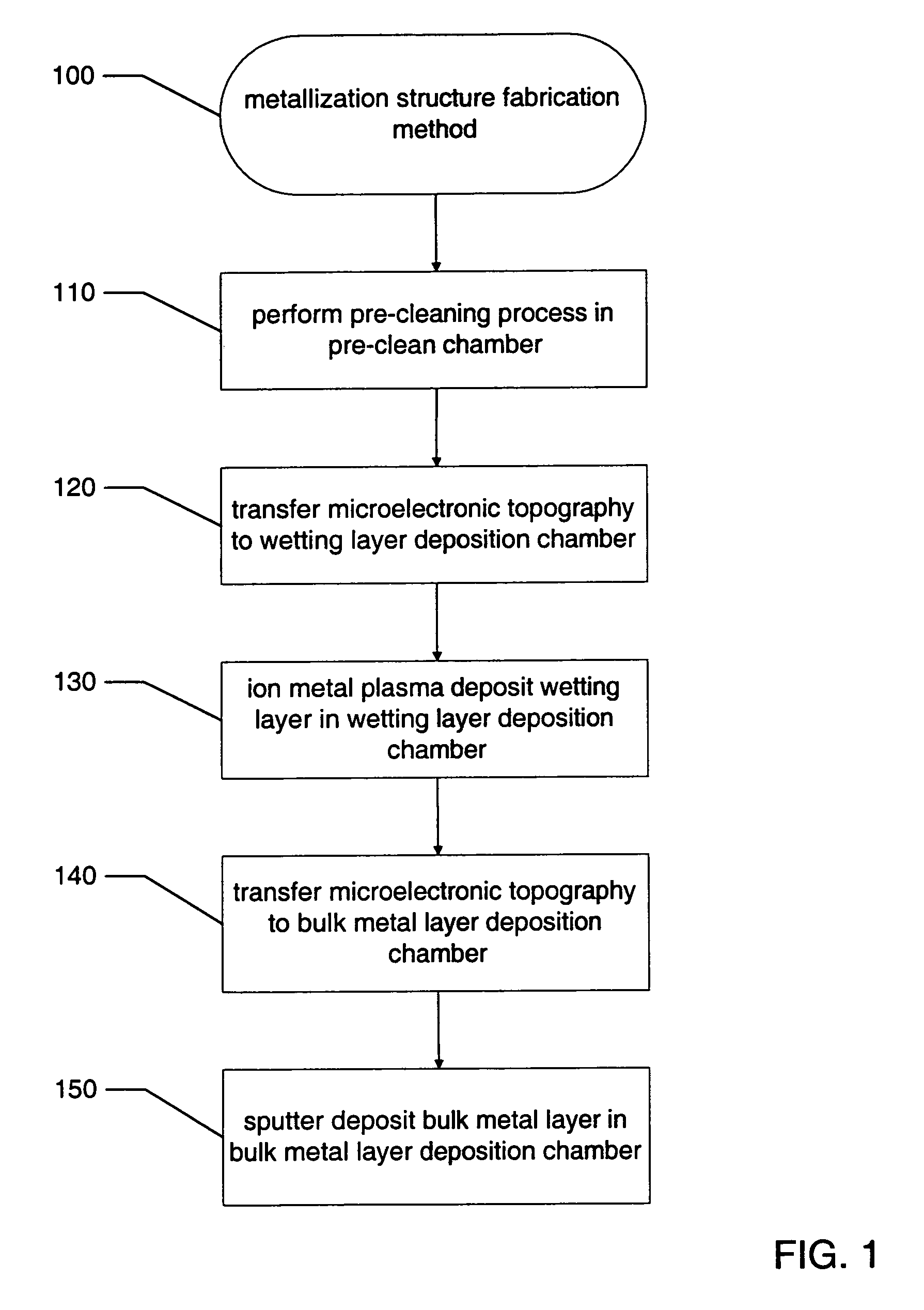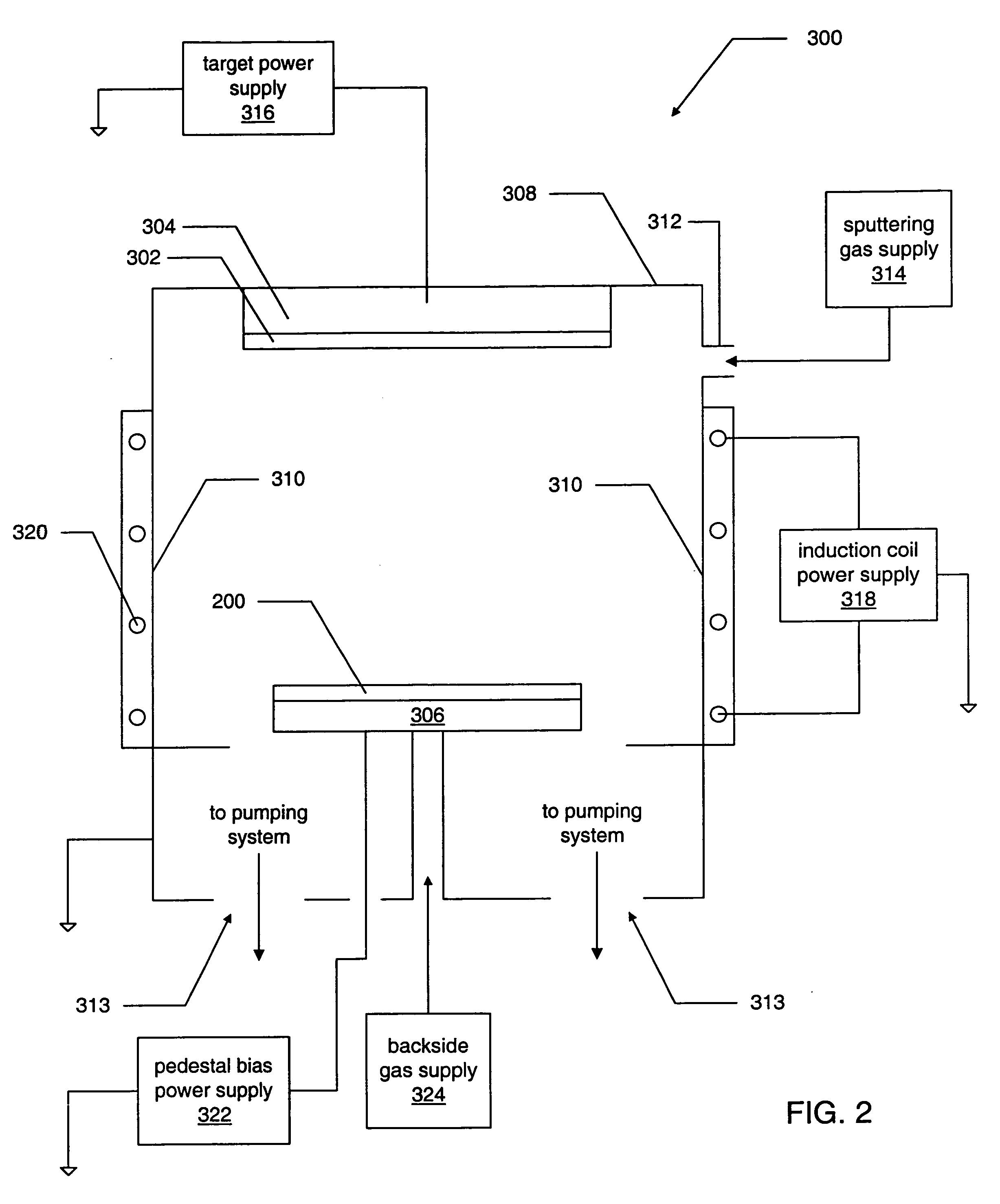Method for forming a metallization structure in an integrated circuit
- Summary
- Abstract
- Description
- Claims
- Application Information
AI Technical Summary
Benefits of technology
Problems solved by technology
Method used
Image
Examples
Embodiment Construction
[0039]FIG. 1 presents a flow chart of a method for fabricating a metallization structure in accordance with a preferred embodiment. Metallization structure fabrication method 100 illustrates a preferred embodiment of the present method. While there may be any number of processing steps performed before and after the steps shown in method 100, method 100 preferably includes a preliminary step 110 of performing a pre-cleaning process.
[0040]In FIG. 4, however, a cross-sectional view of a microelectronic topography suitable for use in an embodiment is shown as configured before performing step 110. Microelectronic topography 200 is shown with a dielectric layer 202 arranged above a lower portion 201 of the microelectronic topography. Microelectronic topography lower portion 201 may include a substrate and any layers and materials formed above the substrate from which microelectronic products (e.g., semiconductor devices) may be produced. Preferably, microelectronic topography lower port...
PUM
| Property | Measurement | Unit |
|---|---|---|
| Fraction | aaaaa | aaaaa |
| Temperature | aaaaa | aaaaa |
| Electrical conductor | aaaaa | aaaaa |
Abstract
Description
Claims
Application Information
 Login to View More
Login to View More - R&D
- Intellectual Property
- Life Sciences
- Materials
- Tech Scout
- Unparalleled Data Quality
- Higher Quality Content
- 60% Fewer Hallucinations
Browse by: Latest US Patents, China's latest patents, Technical Efficacy Thesaurus, Application Domain, Technology Topic, Popular Technical Reports.
© 2025 PatSnap. All rights reserved.Legal|Privacy policy|Modern Slavery Act Transparency Statement|Sitemap|About US| Contact US: help@patsnap.com



